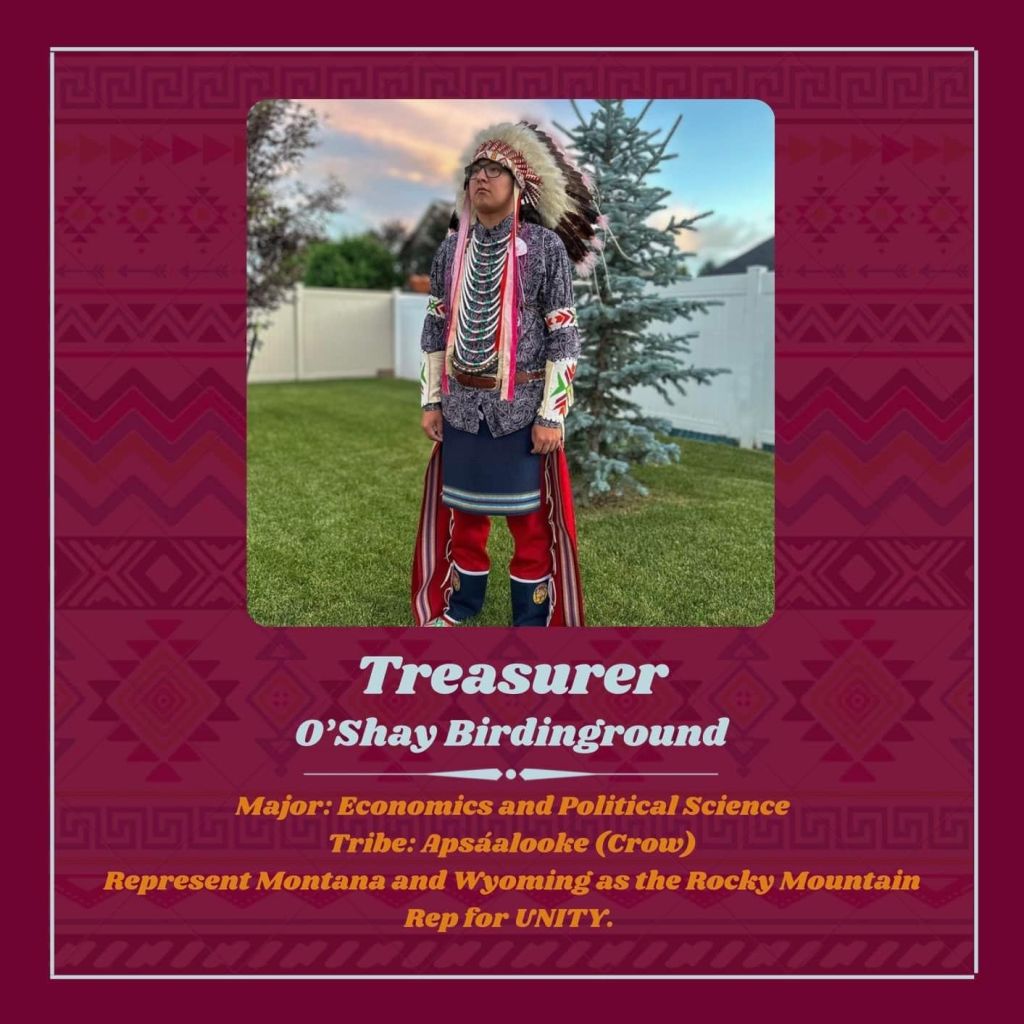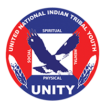
Cultural celebration and resilience form the cornerstone of O’Shay Birdinground’s leadership as Rocky Mountain Representative on the National UNITY Council Executive Committee. From organizing traditional games to leading powwow preparations, this Apsáalooke (Crow) leader showcases how Indigenous heritage can inspire and unite communities.
Elevating Leadership Through Tradition
As the Arena Director for the Crow Fair Royalty Pageant, O’Shay played a pivotal role in celebrating his community’s cultural heritage. This role required him to manage logistics, guide participants, and ensure that the event ran smoothly—all skills that translate directly into leadership.
“Being part of the Crow Fair Royalty Pageant was an honor,” O’Shay shared. “It’s events like these that bring our people together and remind us of the strength in our traditions.”
O’Shay also began planning for the Kyiyo Powwow, an annual celebration organized by the Kyiyo Native American Student Association. The team has already selected their head staff and is preparing for a stickgame tournament that will bring together Tribal Colleges and Universities (TCUs) and other institutions across Montana.
“Traditional Native games are more than just fun—they teach resilience, critical thinking, and teamwork,” O’Shay explained. “They’re also a way to keep our minds active and connected to our culture.”

Traditional Games as a Tool for Leadership
Indigenous games like stickgame are more than recreational activities—they’re educational tools that teach life skills and promote brain health. These games challenge participants to think strategically, communicate effectively, and persevere under pressure, all of which are essential qualities for leadership.
“Games like stickgame connect us to our ancestors and their teachings,” O’Shay said. “They also create opportunities for us to bond as a community, share our languages, and inspire the next generation of leaders.”
Research shows that activities like these can enhance brain health, keeping minds sharp and active. They also serve as platforms for community building, bringing together people of all ages and backgrounds to celebrate Indigenous traditions.
Building Bridges Through Civic Engagement
O’Shay’s efforts extend beyond traditional games. As a member of Ak Bacheeitchilewioosh Youth Council, he is facilitating leadership development within his community by organizing nominations and elections for new council leadership.
“Our youth council is a space where young leaders can step up and make a difference,” O’Shay said. “It’s exciting to see the next generation getting involved and taking ownership of their roles in our community.”
By elevating Indigenous voices and providing opportunities for youth to lead, O’Shay is fulfilling UNITY’s mission to foster the spiritual, mental, physical, and social development of Native youth. His work ensures that cultural knowledge is preserved and passed on, while also inspiring others to take pride in their heritage.
A Vision for Unity and Resilience
O’Shay’s leadership journey is a powerful example of how cultural pride and civic engagement can create lasting impact. Through events like the stickgame tournament and Kyiyo Powwow, he is not only preserving traditions but also creating spaces for connection and growth.
“Resilience is at the heart of who we are as Indigenous people,” O’Shay said. “When we come together to celebrate our culture, play our traditional games, and lift each other up, we’re building stronger communities for the future.”
Inspiring the Next Generation
Through his servant leadership, O’Shay Birdinground is inspiring Native youth to embrace their heritage, take on leadership roles, and carry forward the knowledge of their ancestors. His dedication to fostering unity and resilience within his community reflects the core values of UNITY and serves as a blueprint for future leaders.
“Leadership isn’t just about making decisions—it’s about bringing people together, learning from each other, and staying connected to who we are,” O’Shay said. “It’s through our collective efforts that we can create a brighter future for all.”
O’Shay’s work is a reminder of the enduring power of culture and community to shape the leaders of tomorrow. By combining tradition, education, and civic engagement, he is ensuring that Indigenous voices remain strong and that future generations continue to thrive.

